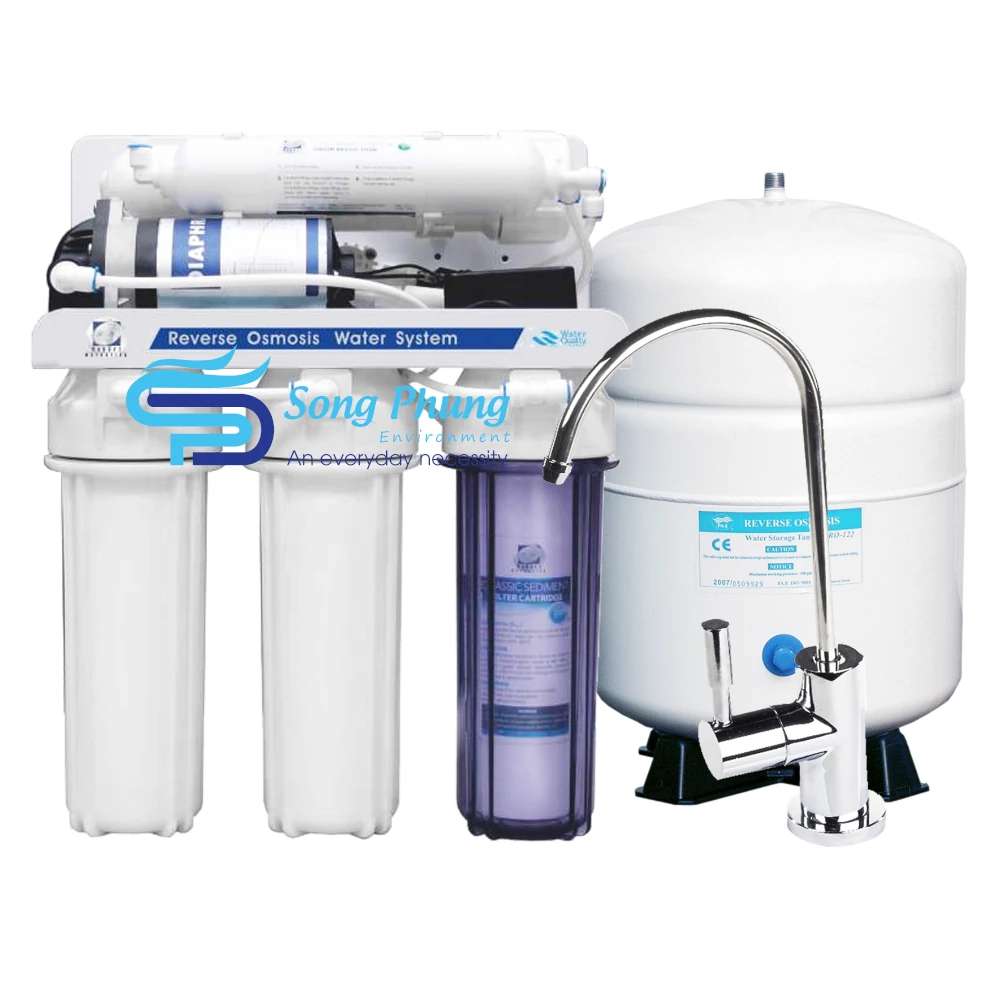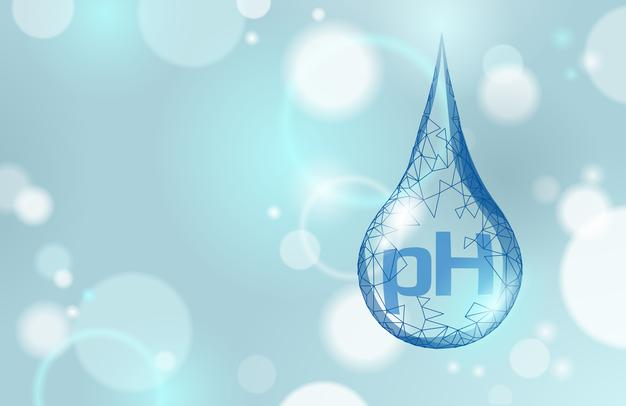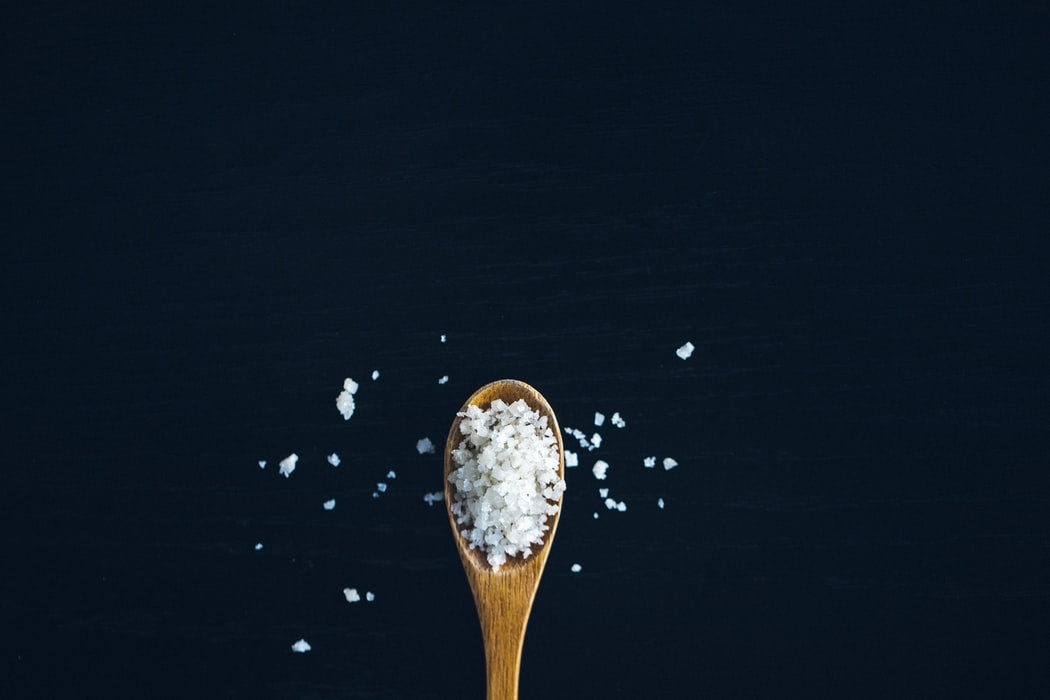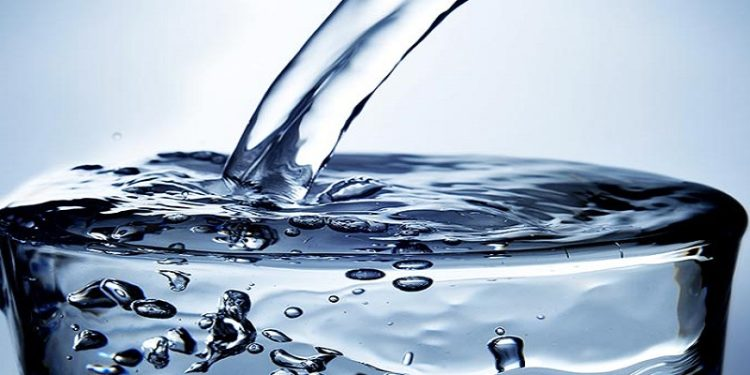What are VOCs and how to get rid of them?
VOCs (volatile organic compounds) are EPA-regulated contaminants present in the air you breathe and in your drinking water. VOCs originate in a wide range of common household products, from insect sprays to paint thinners. Through spills and overflows, they can end up in your water supply.

What is VOC?
Volatile organic compounds, VOCs for short, are organic chemicals with very low boiling points. Therefore, when exposed to normal air temperatures, they will easily turn into gas and vapor. Their ability to convert to gas even at sub-freezing temperatures is called volatility.
Where do VOCs come from?
VOCs are common in the atmosphere because they are present in many household products that are used frequently. VOCs come from paints, gasoline, solvents, inks, glues, magic markers and dry erase pens, etc. The distinct smell when you open the cap of a permanent marker is an example of VOCs in action. That odor is a volatile organic compound that releases as a vapor after exposure to room temperature air. VOCs can also come from spray adhesives, pesticides, upholstery, sealants, cleaning products, and air fresheners.
How do VOCs get into water?
Most VOCs enter water bodies directly as a result of human activities. Improper handling of volatile organic compounds causes them to seep into the soil. Once they have entered groundwater, they can migrate from aquifers to lakes and reservoirs. Continued rainfall can carry them to water supplies such as urban wells and mills. Some VOCs are produced as a result of the chemical reactions that take place during water disinfection. However, the VOCs in water are slightly different from their airborne counterparts. They don’t have the distinctive taste or smell associated with many airborne VOCs, like gasoline. If your water has high levels of volatile organic compounds, it’s most likely one of three contaminants.
The three most common typess of VOCs in water:
- Trihalomethane: Trihalomethane is the most common VOC found in water. Trihalomethane is a by-product of water disinfection. When a municipal water treatment plant wants to disinfect water for distribution throughout the city, it adds chlorine. When water with organic content is chlorinated, the organics and chlorine combine and produce trihalomethane as a by-product. This happens when municipal suppliers chlorinate water from a lake or river. Because of the popularity of this sterilization method, trihalomethane is the most common VOC in water. When private well owners add chlorine to their wells, the same trihalomethane compound is created.
- PCE (Perchlorethylene): PCE is a by-product of solvents. PCE is commonly used in dry cleaning and as a degreasing agent in industrial sites. It is also found in consumer products such as shoe polish and solvents used to dilute and break down inks.
- MTBE (Methyl tert-butyl ether): MTBE is a fuel additive. After lead was no longer legally permitted for use with gasoline, MTBE was replaced to increase the octane number of gasoline. After being widely used, MTBE began to appear in the country. From spills to underground tank leaks, MTBE has contaminated groundwater and soil.
What is my risk of exposure to VOCs?
High VOCs are more likely to be found in groundwater supplies than in municipal water. However, city water will also have VOC levels, although you won’t see them at high levels. The EPA regulates 23 volatile organic compounds, which means municipal water suppliers must monitor these compounds. If they exceed the maximum pollutant levels set by the EPA, the city supplier must take action to reduce the levels so that they are below the maximum pollutant level. However, it’s important to regularly test your groundwater to make sure your VOC levels aren’t too high, especially if you’re a private well owner or if you have reason to believe that your primary water source mine was contaminated.
Are VOCs dangerous?

It is difficult to generalize about the dangers of VOCs in water because there are so many different variations of them. Furthermore, no extensive testing has been performed to determine the health risks posed by many household products that release VOCs. However, there is evidence that exposure to VOCs has negative side effects. According to the EPA, volatile organic compounds have been linked to eye, nose, and throat irritation, headaches, loss of coordination, and nausea. Prolonged exposure can cause damage to the liver, kidneys, and central nervous system. Whether they cause cancer or not is still controversial. Some organic substances have been shown to be carcinogenic in animals and some are suspected of causing cancer in humans.
How do you test for VOCs in water?
The only way to effectively test VOCs in water is to take a sample of the water and send it to a certified lab. In addition to bacteria and heavy metals, it also checks for trihalomethanes and 44 other VOCs that may be in your water. If you depend on wells to provide water for your home, you should test your water for volatile organic compounds every year. The only way to know for sure if your VOC levels are too high is to test your water periodically. VOCs in water do not necessarily have to have an odor, taste or color. So you could unknowingly have high VOC levels if you don’t run the test on your water.
How do you remove VOCs from water?
Carbon filters are very effective at removing VOCs from water. Since VOCs are organic compounds, they are carbon-based. The activated carbon filter’s adsorption properties allow it to retain carbon-based VOCs. There is no better defense against VOCs in water than carbon. Carbon filters come in a variety of shapes, sizes, and applications. If you have a refrigerator filter that guarantees carbon, that filter will remove VOCs from the water in your refrigerator. You can install carbon filters under the sink, on the countertop or even as a whole house filtration system. This has the added benefit of removing chlorine and chloramines, which greatly improves the taste of your indoor drinking water.
If you are using an on-site drinking water filter, you want to make sure it can reduce VOCs. VOCs will deplete filter media much faster than chlorine. For effective removal of volatile organic compounds, it is important not to exceed the capacity of the filter.
What is vinyl chloride?
Vinyl chloride is a flammable, colorless VOC that is an essential ingredient in the production of PVC. Vinyl chloride is commercially produced and does not occur naturally. However, vinyl chloride is released into the environment through industrial production and discharge, storage and transportation accidents, workplace exposure or improper handling methods. This VOC is a particular cause of concern to the public because of its known carcinogenic risks. Vinyl chloride has been linked to liver cancer, as well as brain and lung cancer, lymphoma, and leukemia. The International Agency for Research on Cancer classifies vinyl chloride as a Group 1 carcinogen, the highest level of classification indicating that there is thorough and convincing evidence that the agent causes cancer in humans.
How do you remove vinyl chloride from water?
Vinyl chloride can be effectively removed from water by an activated carbon filter. The activated carbon filter is porous and through adsorption, can trap vinyl chloride particles and remove them from the water. This is a common filtration method used to remove cosmetic contaminants such as chlorine, as well as more serious health hazards such as lead.
When purchasing a water filter to remove vinyl chloride, pay attention to the life of the filter and the contaminants the filter has been tested to remove. Many special carbon filters are made specifically with the goal of reducing VOCs. Activated carbon filters are designed for a variety of sizes and applications. They can be installed in a refrigerator, mounted under a sink or treated water at the entrance to a home or business.
It is important to diligently replace installed water filters to remove vinyl chloride or other VOCs. VOCs like vinyl chloride will deplete carbon filter media 33% faster than other contaminants. Therefore, if you are buying a water filter that says it has a lifespan of 6 months, this could refer to its ability to treat water to remove contaminants such as chlorine. You will need to replace this filter about every two months to ensure that it is still removing vinyl chloride and other VOCs from the water.
If you have reason to suspect your water supply has been exposed to vinyl chloride, conduct a home lab test or have your water tested by a professional. Under-sink or countertop filters are a good choice to ensure that the drinking water you and your family uses is safe. However, if the results show significant contamination, installing a whole-house carbon filtration system will ensure that VOC contaminants are removed from all water-using appliances, reducing your risk of exposure when bathing, brushing your teeth, doing laundry or cleaning dishes.
Does RO remove VOCs?
Reverse osmosis systems will remove VOCs, but only if they have a pre- or post-carbon filter. Reverse osmosis itself cannot remove VOCs. The VOCs will pass through the membrane like oxygen. Fortunately, carbon filters are often installed with VOCs. And if they can pass through the membrane, your post-carbon filter will remove it before it even hits your drinking water.
See more: 9 health benefits of filtered water that you didn’t know
If you have any questions about home filters or water equipment, please call Song Phung immediately via hotline 0913.90.72.74 – 0984.620.494 for a product quote, or order quickly online at https://thietbinganhnuoc .com/san-pham
Follow Fanpage: https://www.facebook.com/SongPhungthietbinganhnuoc/ to update new products
Translator: Duong Nguyen Hoang Khang














